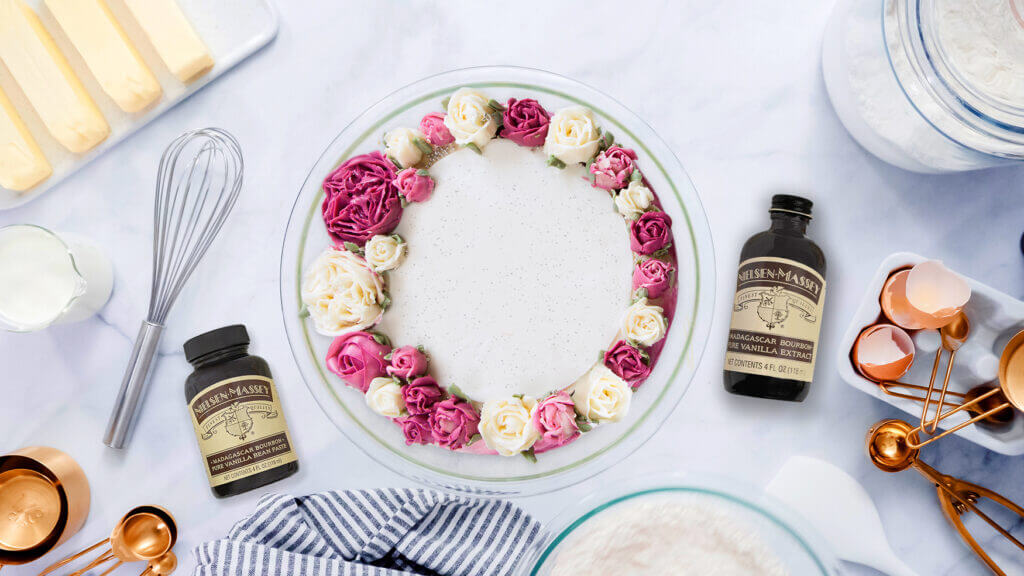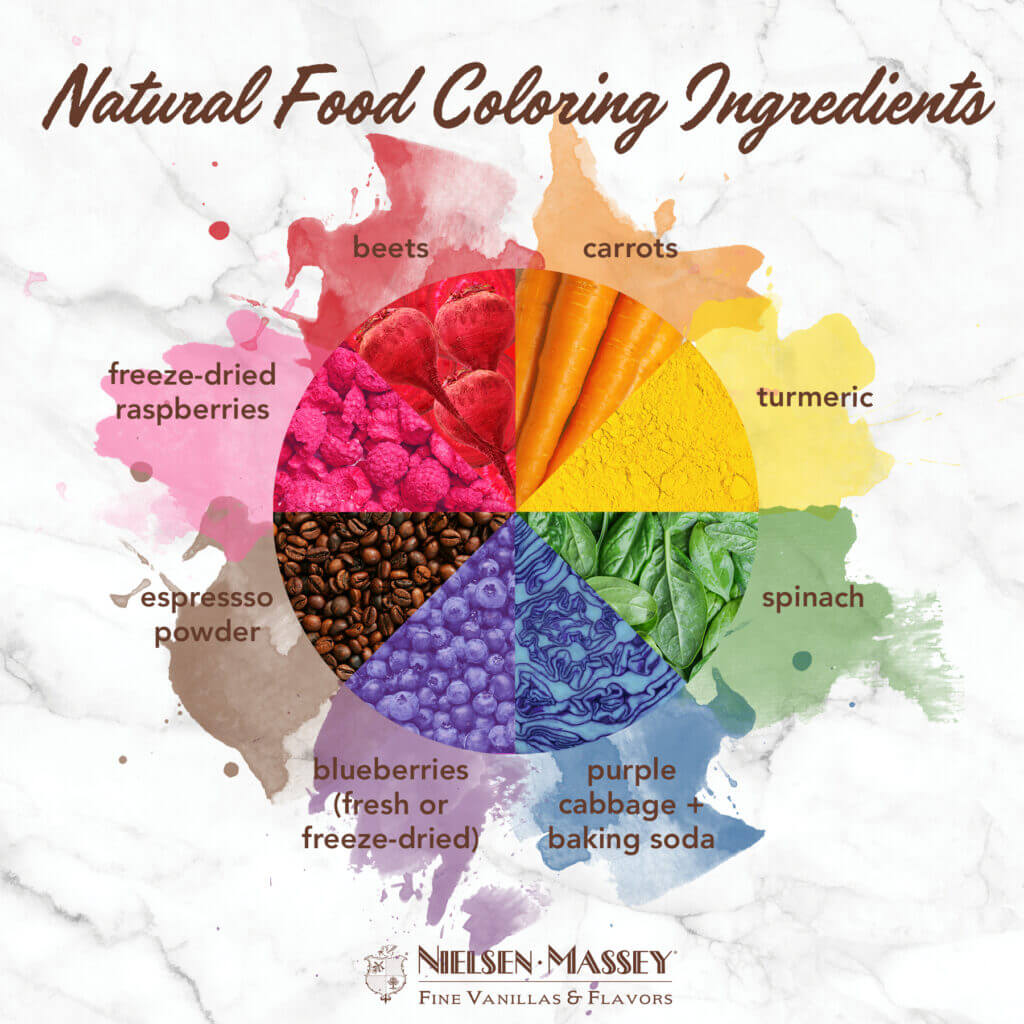How to Make All-Natural, Homemade Food Coloring
Did you know you can create vibrant food coloring at home without using artificial dyes? You can produce beautiful hues by repurposing simple ingredients you may already have. Use these coloring ideas to create beautiful, naturally-vibrant cakes by incorporating them in your buttercream flowers.

Starting from Scratch
The first step to making DIY all-natural food coloring is to look around your pantry and fridge for colorful powders and liquids. This is a time for you to get creative and experiment!
Powders such as spices, matcha, cocoa powder, coffee/espresso powder, or pulverized freeze-dried fruits can be added directly to the recipe for an extra pop of color. To incorporate these ingredients as a powder – run them through a food processor or spice grinder beforehand to make sure the granules are extra fine. You can also combine any powder with a few teaspoons of water to create more even color distribution. If using freeze-dried fruits, sifting the powders after grinding can help remove some larger pieces and prevent a ‘speckled’ effect in the final product.
Natural food coloring can also be made with juices or purees. Fruits and vegetables you juice at home will have more color than a juice bought at the store, but both can be used for coloring. To use fruit or vegetable juice as food coloring, first concentrate the color by simmering it over low heat until you have a quarter of the liquid you started with. For a more intense color, puree your fruit or vegetable, adding a little bit of water if necessary to help the pureeing process. Strain the mixture and then simmer to concentrate the liquid before cooling and adding to a recipe.
Keep your prepared colors in sealed containers, refrigerating any made with fruits or vegetables. Your homemade food coloring will keep for a few weeks. Test for freshness before using.
Mixing Colors
Below are a few foods you can use to craft a myriad of colors.

Keep in mind, natural food coloring will be more muted than conventional food dye. The colors may appear less saturated and more pastel. Because the color comes from real ingredients, they may also change the taste of your final baked good, depending on the quantity needed to reach your ideal color. Be sure to choose ingredients that you are comfortable tasting in your pastries.
Food Coloring in Buttercreams
Whether you’re adding powder or liquid food coloring, it’s best to test with a small amount of buttercream first to get an idea of how the frosting will take the color. Once you have tested the color, you can gradually add more to the larger batch until the desired color is reached. Be careful to not add too much food coloring, as it can affect the consistency of your buttercream. Taste as you go as well to monitor how the coloring might be affecting the flavor.
For powders, start by adding 1 teaspoon and increase as needed; for liquids, start with ½ teaspoon and increase as needed.
Making your own food coloring is a fun activity for both adults and kids — the color possibilities are endless! Show us your colorful creations by tagging us @NielsenMassey and using #BetterYourBake.
